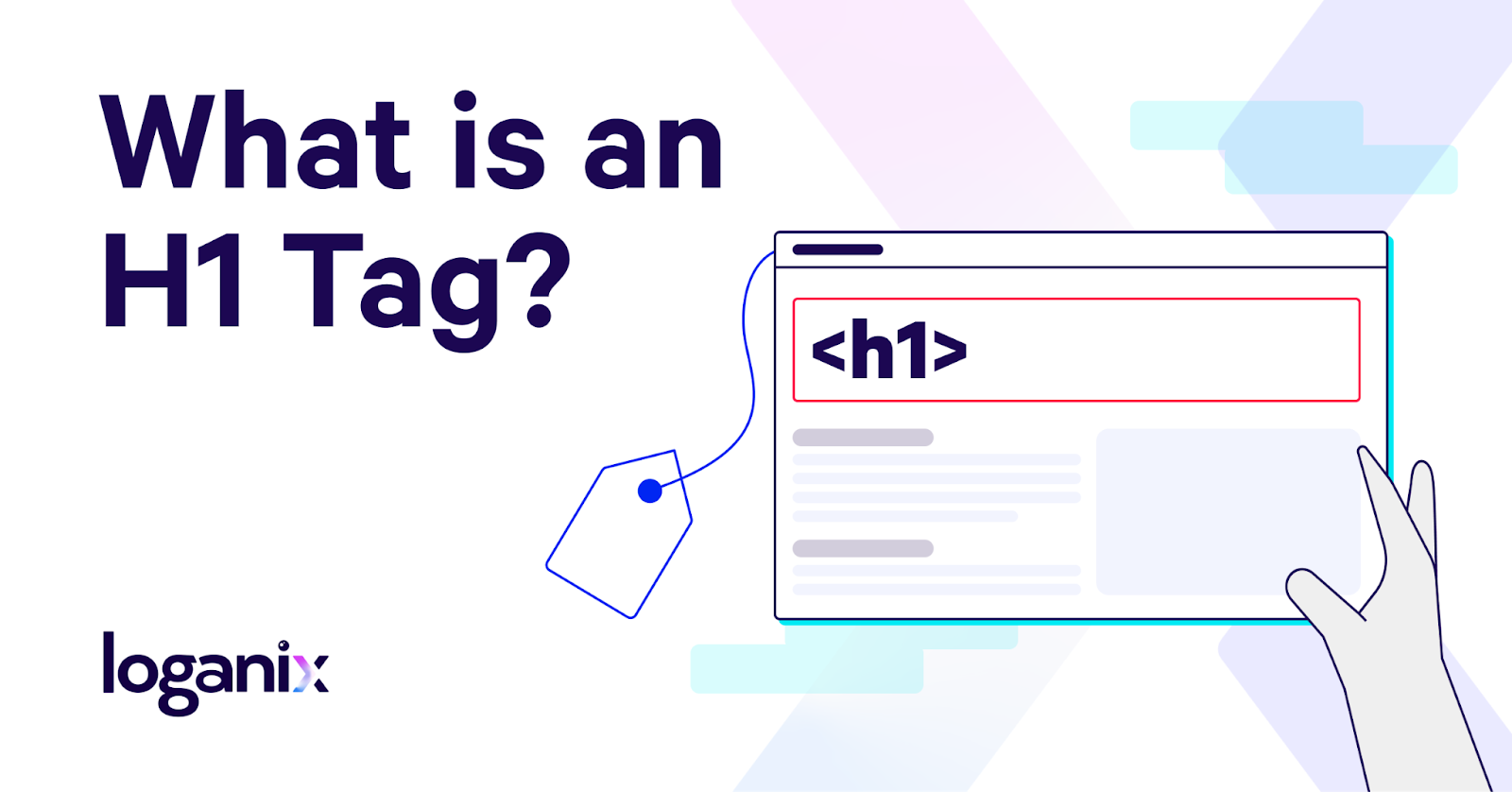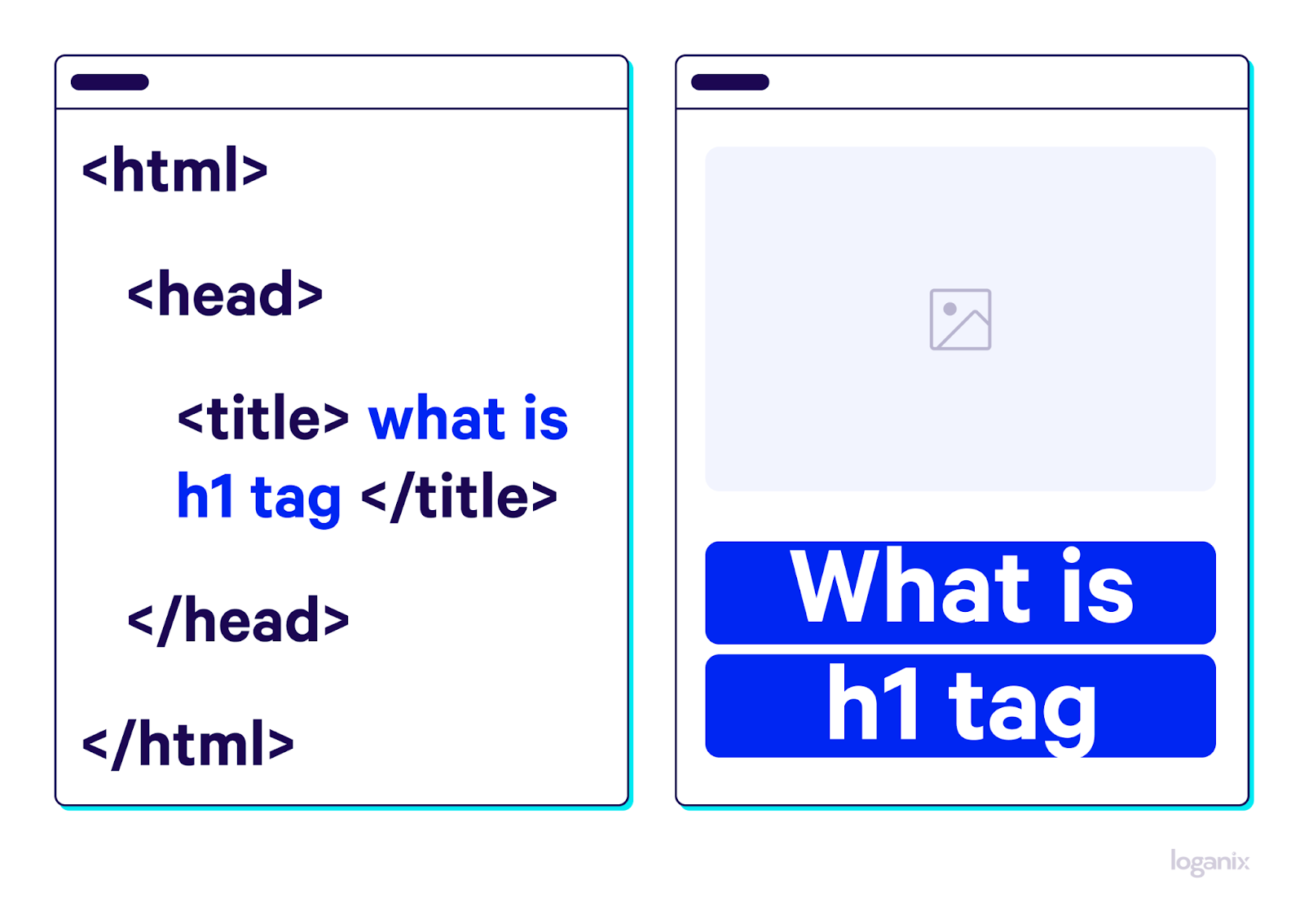What is an H1 Tag?

Hand off the toughest tasks in SEO, PPC, and content without compromising quality
Explore ServicesHTML tags are at the heart of search engine optimization (SEO) but are often shrouded in ambiguity for those new to the field. Thankfully, the concept behind H1s and their integration into your on-page SEO tactics are not as complex as you may first think. In fact, with a keen understanding and the right approach, they can become powerful tools in your digital arsenal.
To get you up to speed with everything H1, in this guide, we
- dispel the mystique around “What is an H1,”
- shed light on their crucial role in SEO,
- and, when used correctly, how they can propel your content to new heights.
What is an H1 Tag?
H1 tags are HTML code nestled within the opening <h1> and closing </h1> tags. Just like a book’s title, H1 tags are the most prominent indicator of what a web page’s content will contain.

H1 tags don’t exist in isolation. HTML provides a hierarchy of heading tags ranging from H1 through to H6. The difference between an H1 tag and other heading tags, such as H2 or H3, resides in their importance level and role in creating structure.
Think of them as a table of contents in a book, where the H1 is the book’s title, the H2s are chapter titles, and H3s (and subsequent header tags) are subheadings or section titles within those chapters. All serve essential functions, but the H1 tag carries the most “weight.”
Learn more: SEO glossary 250+ terms explained.
Why Are H1 Tags Important?
Okay, so H1s are just simple snippets of HTML code, but that’s not to say that they don’t play a pivotal role in SEO, user experience, and web accessibility.
Assists Search Engine Comprehension
H1 tags are a strong signal to search engines that help them determine what a web page is all about. For this reason, search engines like Google see H1s as a ranking factor. Why? Well, H1s (or, more accurately, title tags) directly impact how a web page appears on the search engine results pages (SERPs). If done right, H1s have the ability to attract high levels of organic traffic.
Enhances User Experience
H1s also contribute heavily to user experience. When matched with a web page’s title tag, a best practice we’ll tackle in just a moment, a well-written H1 tag can be the difference between a user clicking on your content from the SERPs and staying on your page to learn more or bouncing off to a competitor’s website.
Why? Because internet users typically skim both the SERPs and a web page’s content looking for helpful information. An enticing and descriptive H1 tag guides them to the exact content they seek, increasing click-through rates, reducing bounce rates, and boosting the time spent on your website.
Facilitates Web Accessibility
H1 tags are also a crucial element of web accessibility—they assist screen reading software in understanding the structure of the topic of a web page, making the internet a more accessible place for the visually impaired.
Optimizing Your Strategy: H1 Tag SEO Best Practices
Let’s look at some best practices. These will help you optimize your H1 tags for search engines and users, creating a win-win situation for your SEO strategy.

1. One H1 Tag Per Page
The use of multiple H1s is not considered best practice. Why? Having multiple H1 tags can dilute the value and impact of each, confusing both users and search engines about the page’s main topic.
2. Align H1 with Title Tags
While we recommend that your title tags and H1s are identical, at the very least, if they differ, they should align closely in meaning. The title tag is what users see on the SERPs, and the H1 tag is the first thing they see when they click on your page.
3. Make H1 Tags Compelling
Think of your H1 tag as your opportunity to make an impactful first impression. It should be compelling enough to pique your reader’s interest and make them want to read more. How? Use persuasive language, and be sure it accurately reflects the content of your page.
4. Incorporate Target Keywords
Remember to incorporate your target keywords in your H1 tag. It helps search engines understand the topic of your page but also assures users that they’ve landed on a page relevant to their search query.
Common Pitfalls: H1 Tag Mistakes to Avoid
Here are common H1 tag pitfalls and how you can avoid them.
1. Missing H1 Tags
Two is too many, and none is not enough. The absence of an H1 tag on your webpage is like missing the title on the cover of a book—it’s the first thing both your audience and search engines look for.
Without this vital piece of information, you guessed it, your page’s main theme becomes unclear, creating a poor user experience and negatively impacting SEO performance. To rectify this, always ensure each webpage has a distinct H1 tag that accurately represents the content.
2. Overly Long or Short H1 Tags
Size matters when it comes to H1 tags. Overly long H1 tags—longer than 575 pixels or around 60 characters—are cumbersome, lose the reader’s attention, and won’t be displayed in full on the SERPs. While extremely short H1s—285 pixels or less than 30 characters—may not provide enough context.

Mobil devices vary. Just keep in mind that an H1 tag that looks fine on a desktop may be cut off on a mobile screen, impeding the mobile user experience. It’s crucial to keep your H1 tags succinct and ensure they’re optimized for mobile viewing.
To help you get this right, use this SERP preview tool.
3. Non-Descriptive H1 Tags
H1 tags should give your readers an immediate understanding of a web page’s content. If your H1 tag is vague or irrelevant, it will very likely lead to a high bounce rate, as visitors may not find the information they seek. So be clear and descriptive in your H1 tags, something that accurately reflects a web page’s content.

Wrapping Up: Leverage the Power of H1 Tags for Improved SEO
Mastering the art of curating well-optimized H1 tags is just one piece of the SEO puzzle. That’s why, here at Loganix, we offer comprehensive SEO services that go beyond just H1 tags. Instead, we dive deep into everything on-page and off-page. That way, you can rest assured your website has the best chance of ranking high on the SERPs. With us, you don’t just get an SEO service, you get an SEO partner committed to your growth.
🚀 Contact Loganix today, and let’s start the journey toward enhanced visibility and growth. 🚀
Hand off the toughest tasks in SEO, PPC, and content without compromising quality
Explore ServicesWritten by Aaron Haynes on October 4, 2023
CEO and partner at Loganix, I believe in taking what you do best and sharing it with the world in the most transparent and powerful way possible. If I am not running the business, I am neck deep in client SEO.





